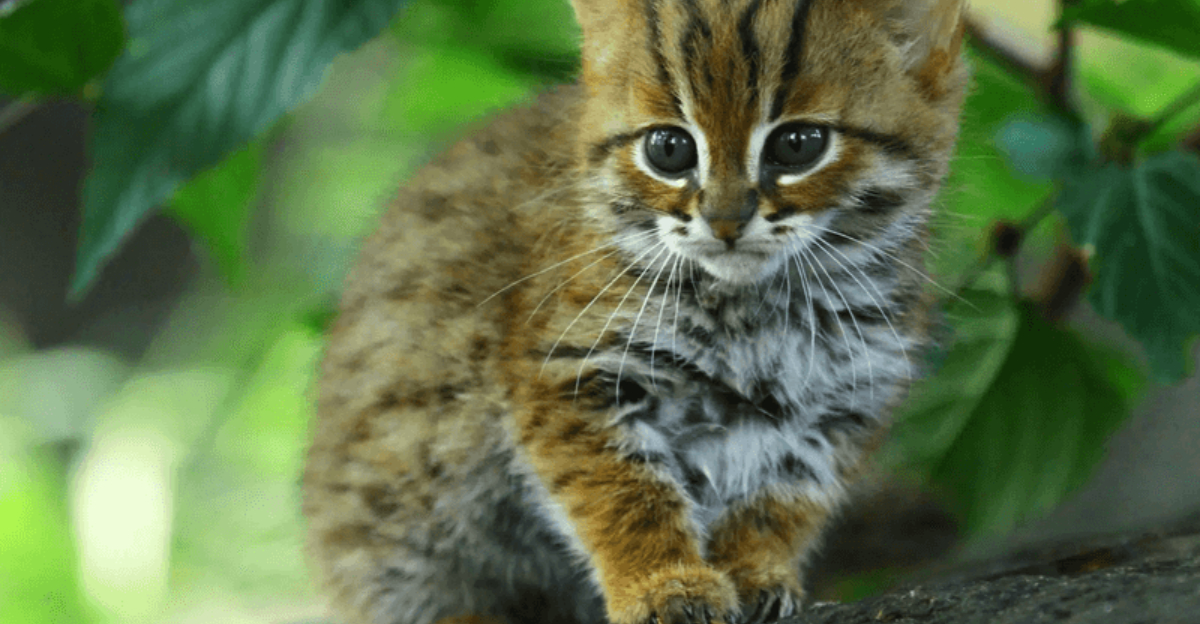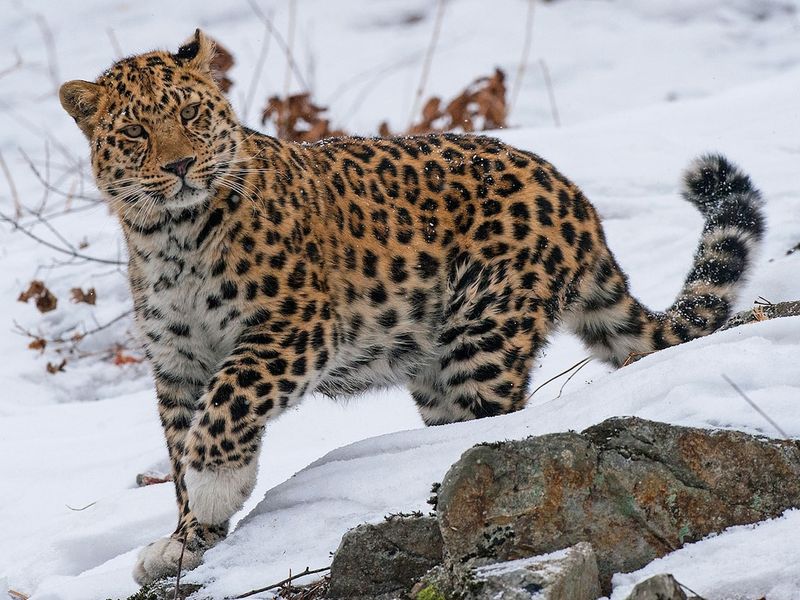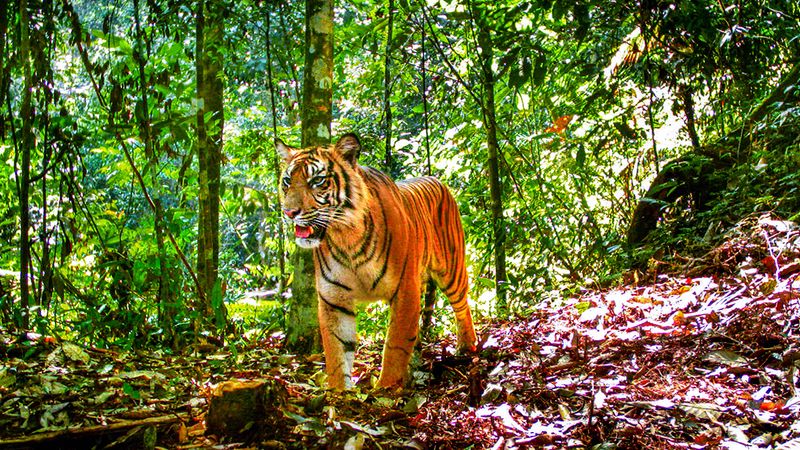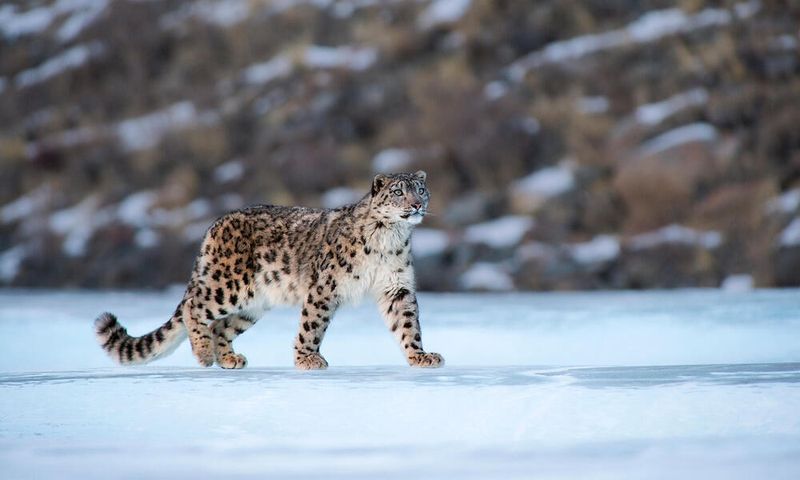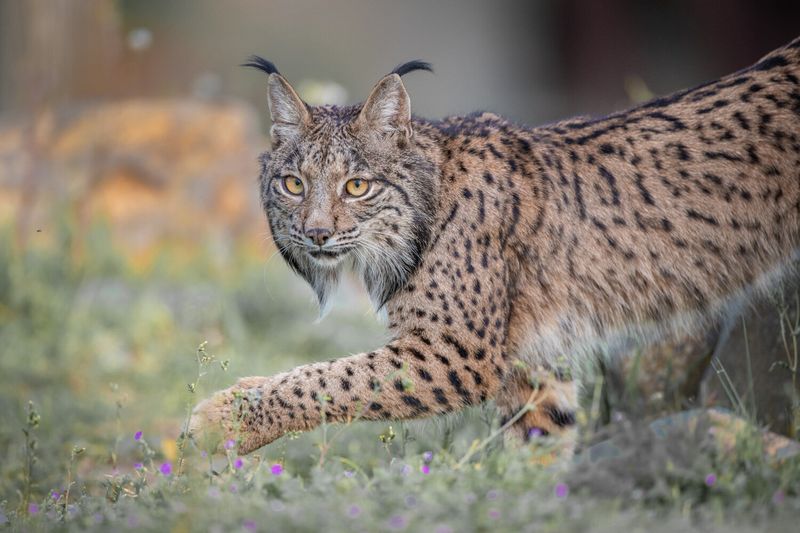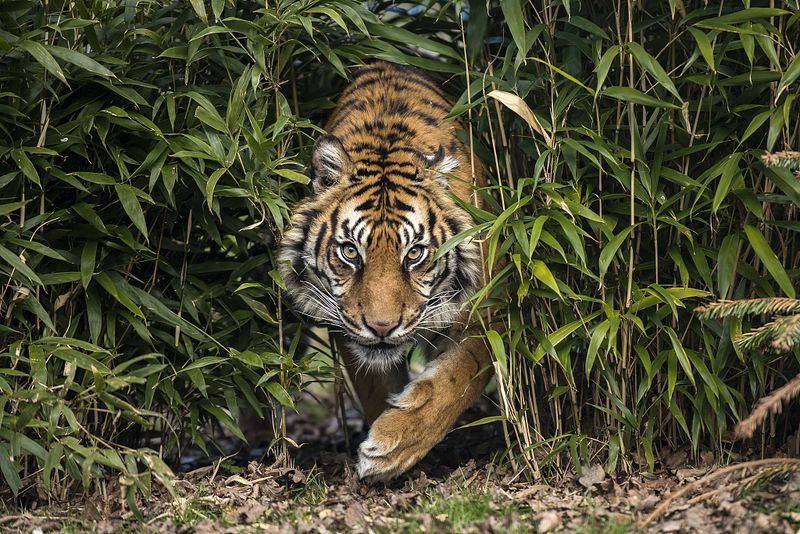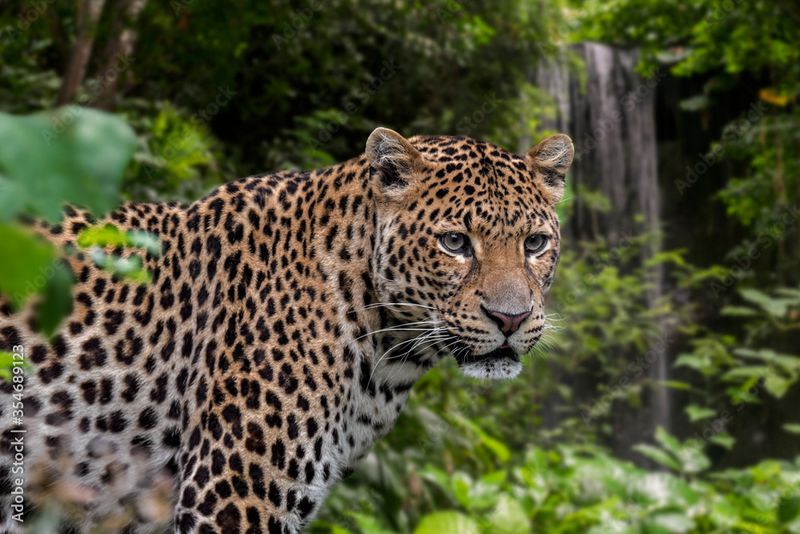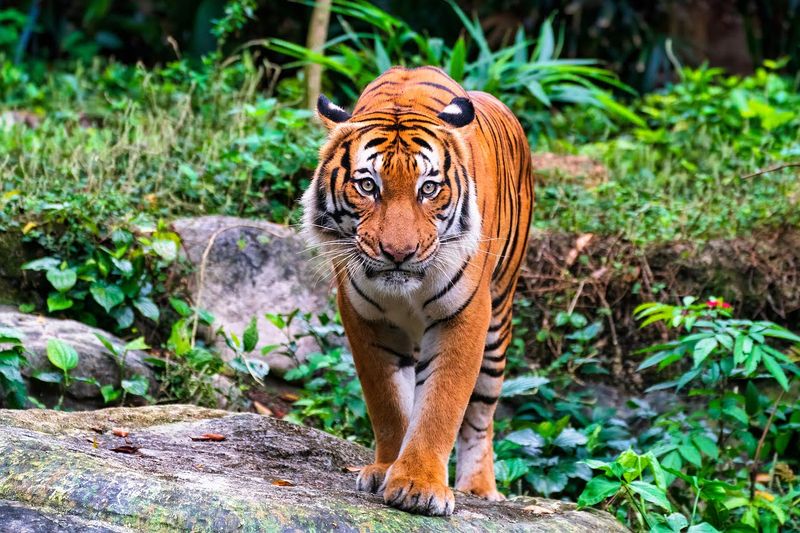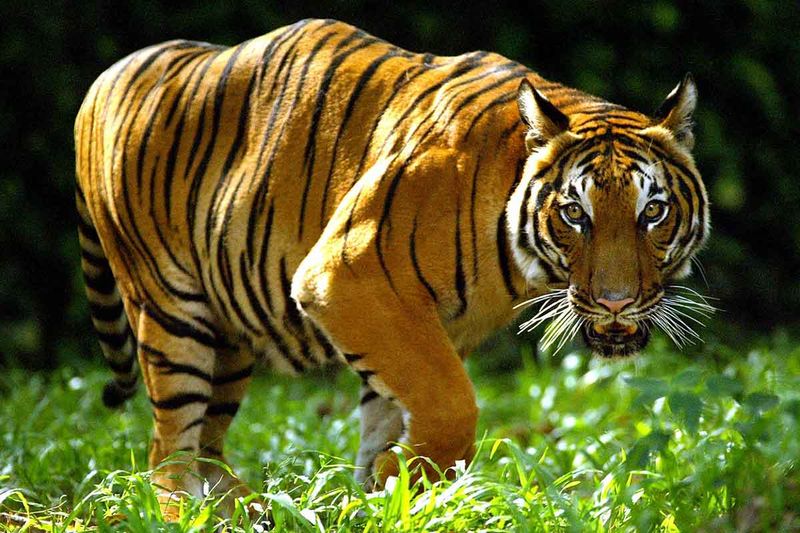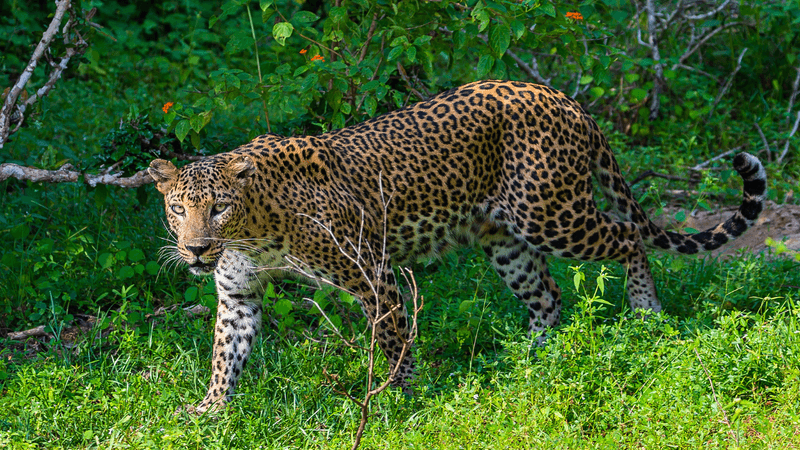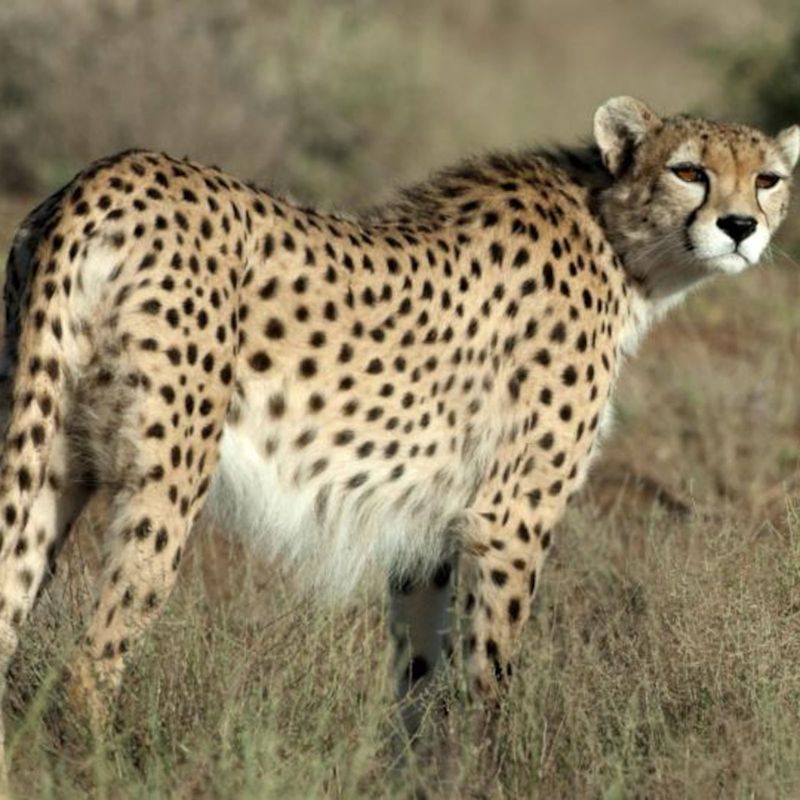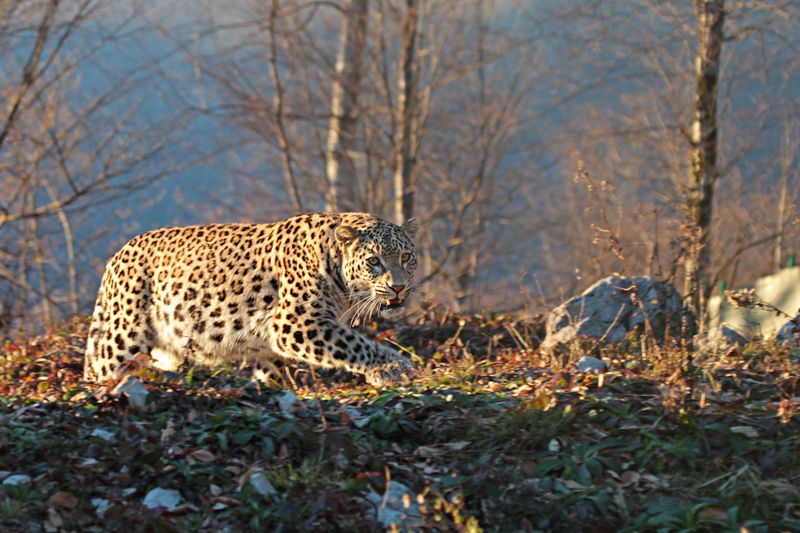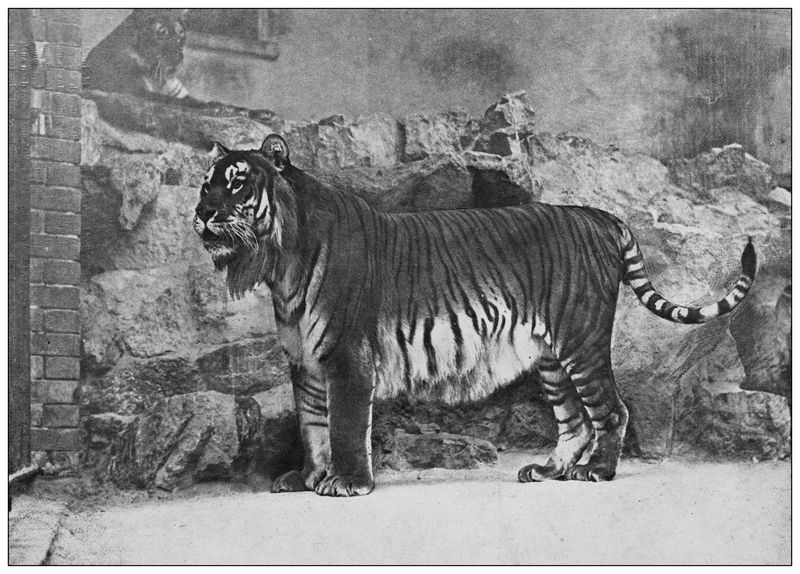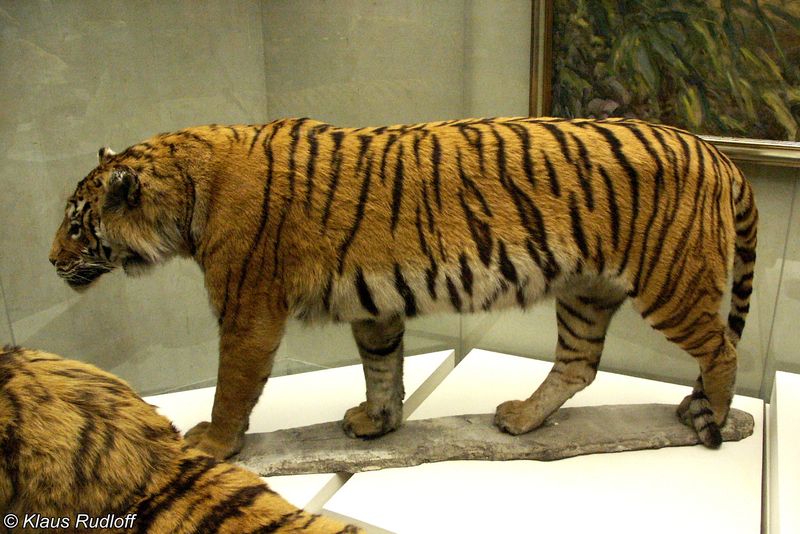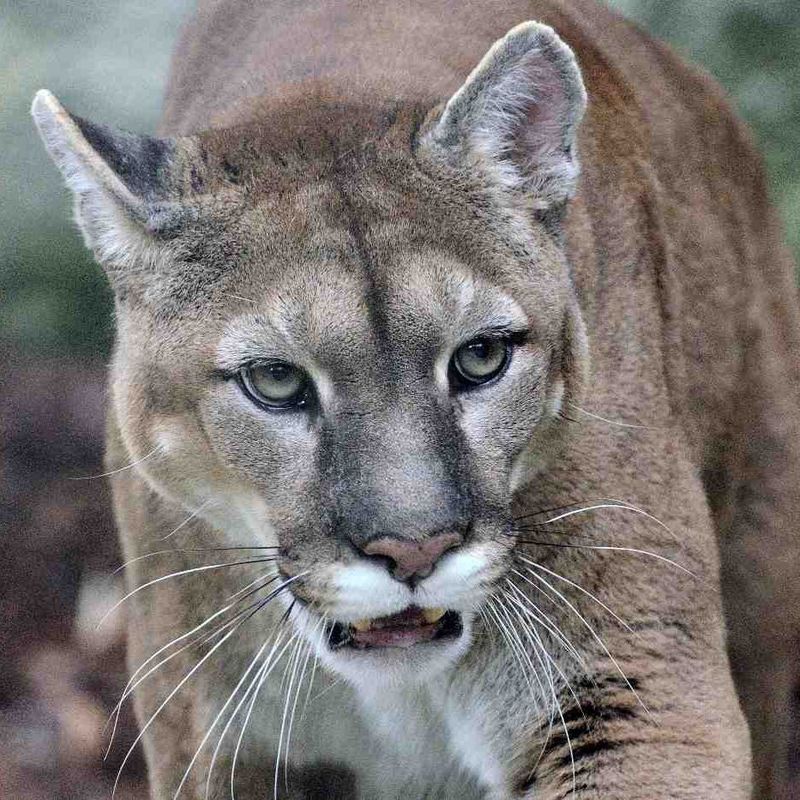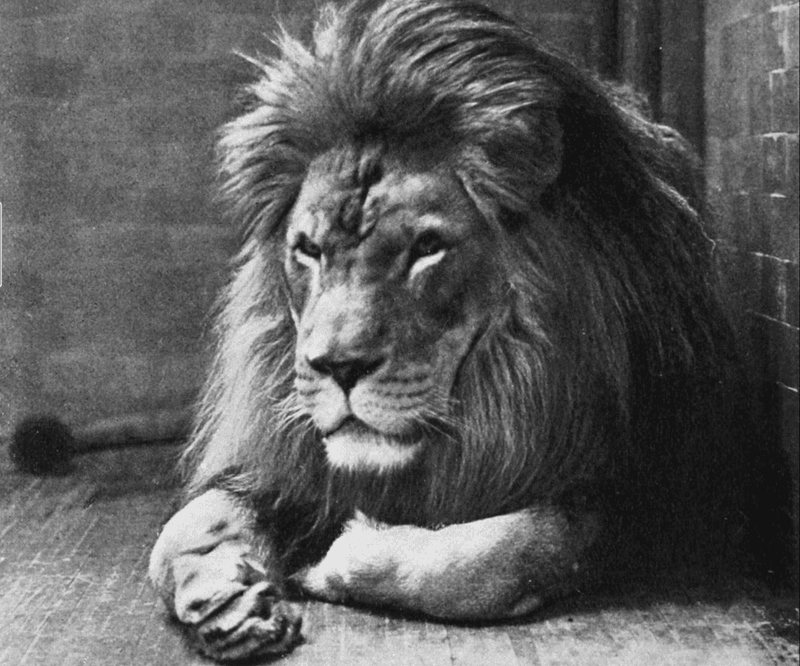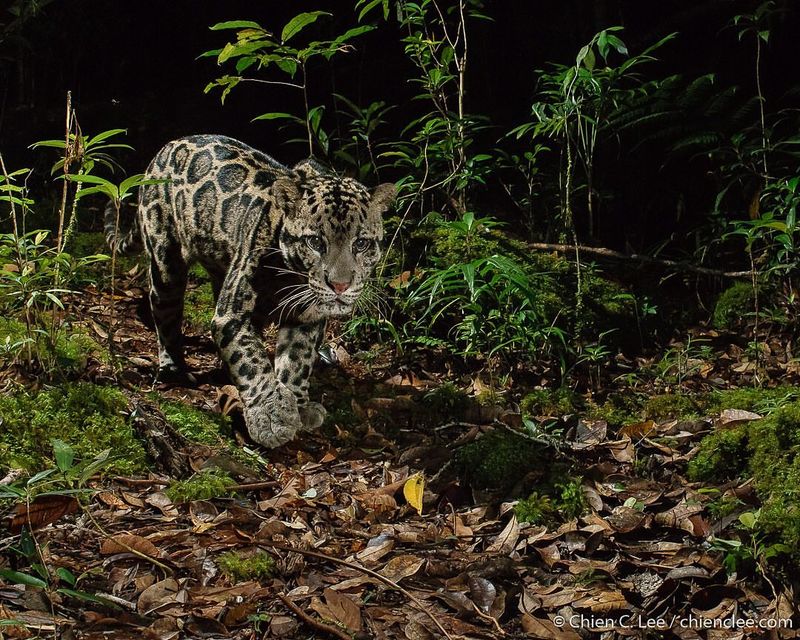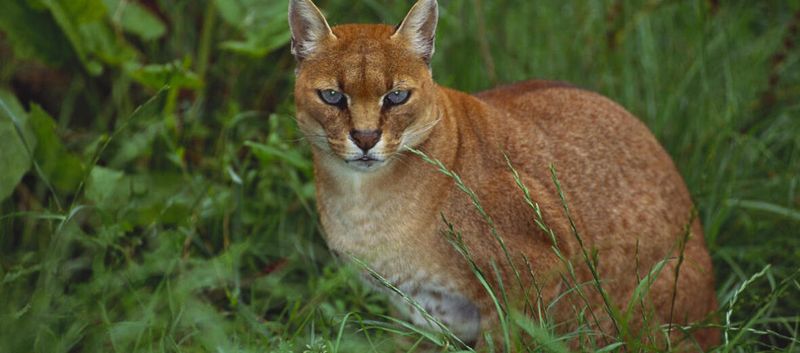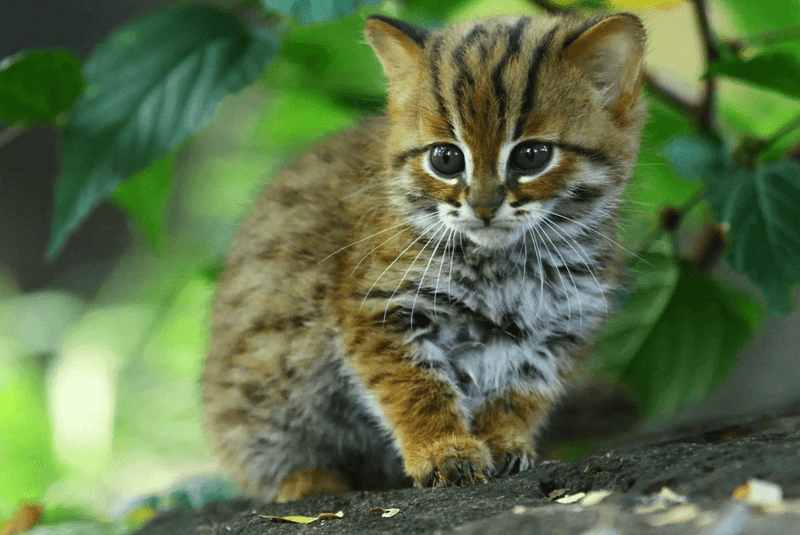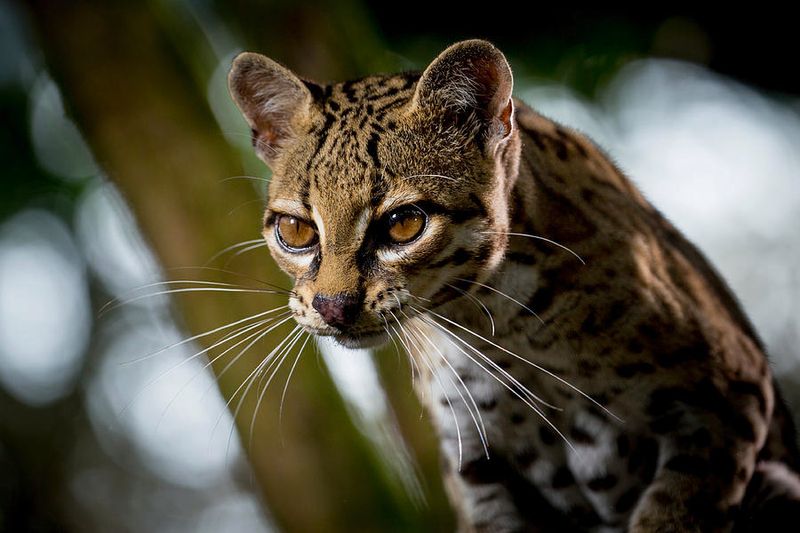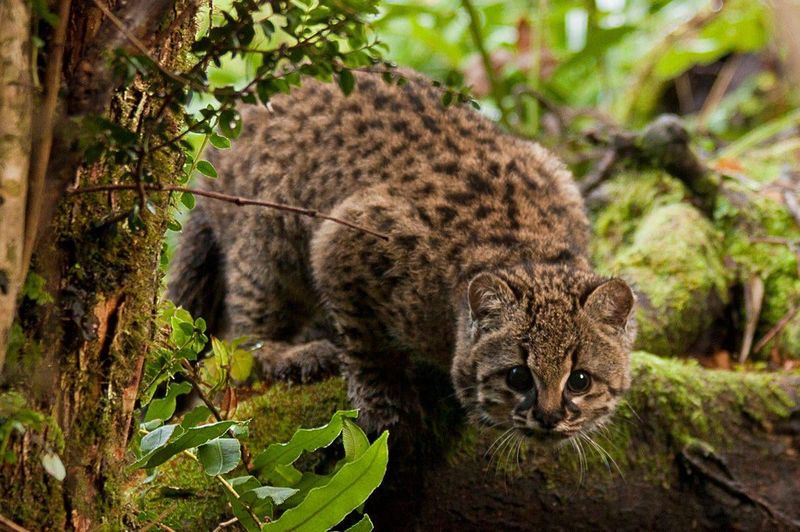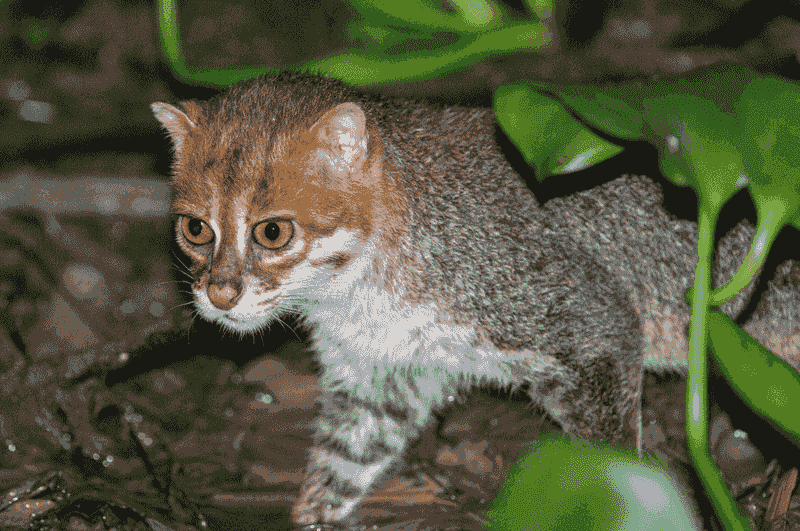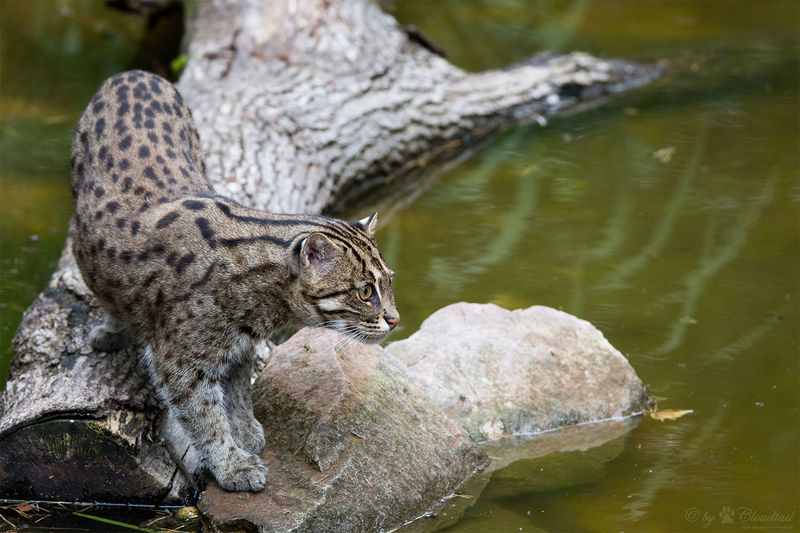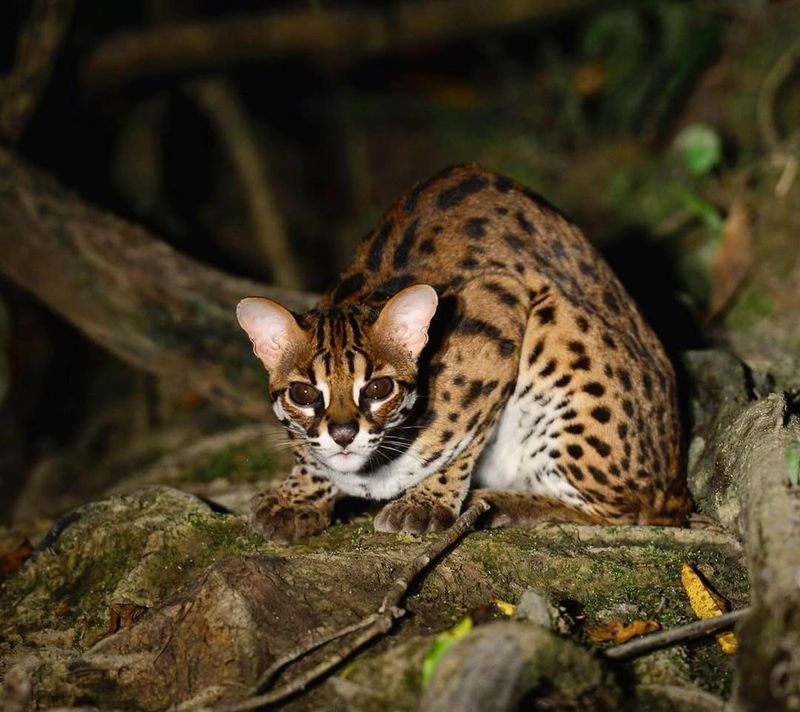📖 Table of Content:
- 1. Amur Leopard
- 2. Sumatran Tiger
- 3. Snow Leopard
- 4. Iberian Lynx
- 5. South China Tiger
- 6. Javan Leopard
- 7. Malayan Tiger
- 8. Indochinese Tiger
- 9. Sri Lankan Leopard
- 10. Asiatic Cheetah
- 11. Persian Leopard
- 12. Caspian Tiger
- 13. Panthera Tigris Virgata
- 14. Eastern Cougar
- 15. Barbary Lion
- 16. Bornean Clouded Leopard
- 17. African Golden Cat
- 18. Rusty-Spotted Cat
- 19. Margay
- 20. Kodkod
- 21. Flat-Headed Cat
- 22. Fishing Cat
- 23. Sunda Leopard Cat
Big cats, the majestic rulers of wild terrains, face perilous futures. From loss of habitat to illegal poaching, these magnificent creatures desperately need our attention and action. By understanding their plight, we can foster efforts to ensure their survival. This list highlights 23 big cats teetering on the brink of extinction, each with a unique story. Discover their world, their challenges, and why they warrant a second chance.
1. Amur Leopard
In the icy forests of Russia, the elusive Amur Leopard prowls with grace. Known for its striking rosette patterns, this big cat is critically endangered. Fewer than 100 individuals remain in the wild, their numbers dwindling due to habitat loss and poaching. These leopards have a remarkable ability to adapt to harsh climates, yet human encroachment threatens their survival. Conservation efforts focus on anti-poaching measures and habitat restoration. With increased awareness and global cooperation, the Amur Leopard can once again thrive in its snowy domain.
2. Sumatran Tiger
Amidst the dense rainforests of Sumatra, the Sumatran Tiger is a symbol of wild beauty. Its distinctively narrow stripes set it apart from other tiger species. Sadly, habitat destruction and illegal trade have pushed this tiger to the brink. Fewer than 400 remain, making it critically endangered. Conservationists work tirelessly to halt deforestation and protect these tigers from poachers. By preserving their natural habitat and supporting breeding programs, there’s hope for the future of the Sumatran Tiger, an emblem of the island’s natural heritage.
3. Snow Leopard
High in the rugged mountains of Central Asia, the Snow Leopard reigns supreme. Known for its thick, spotted fur and long tail, it is perfectly adapted to cold environments. Unfortunately, climate change and human encroachment pose serious threats. With an estimated 4,000 to 6,500 individuals left, this mysterious cat is classified as vulnerable. Conservation efforts focus on community involvement and protecting its mountainous habitat. By fostering coexistence between humans and snow leopards, we can secure a future for this enigmatic predator.
4. Iberian Lynx
In the sunlit meadows of Spain and Portugal, the Iberian Lynx finds its home. Distinguished by its tufted ears and spotted coat, this lynx is critically endangered. Intensive conservation efforts have increased its numbers from near extinction to around 400 individuals. These efforts include captive breeding and habitat restoration. Despite progress, the Iberian Lynx still faces threats from road accidents and feline diseases. Continued support and awareness are vital to ensure this graceful feline’s survival in the wild.
5. South China Tiger
Once roaming the forests of China, the South China Tiger is now critically endangered. With fewer than 30 individuals in the wild, it’s considered possibly extinct in the wild. Conservationists strive to reintroduce captive-bred individuals into protected areas. Habitat destruction and poaching have decimated their population. These tigers are known for their smaller size and distinct stripe patterns. Efforts include establishing reserves and promoting awareness. The future of the South China Tiger hinges on dedicated conservation programs and global cooperation.
6. Javan Leopard
In the tropical forests of Java, the Javan Leopard stealthily moves amongst the trees. This unique leopard is critically endangered due to habitat loss and hunting. With fewer than 250 individuals estimated to exist, their survival hangs by a thread. Efforts to protect their habitat and reduce human-leopard conflict are paramount. The Javan Leopard’s adaptability and elusive nature give hope for conservation success. By preserving their environment and supporting local communities, we can ensure the Javan Leopard continues to roam Java’s forests.
7. Malayan Tiger
The Malayan Tiger, a symbol of Malaysia’s natural heritage, faces a precarious future. With fewer than 200 remaining, it is critically endangered. Habitat loss and poaching for the illegal wildlife trade threaten its existence. Conservationists focus on anti-poaching patrols and habitat conservation. The tiger’s role as a top predator is crucial for maintaining ecological balance. By involving local communities and enforcing stricter wildlife protection laws, there’s hope for the Malayan Tiger’s recovery, ensuring it continues to embody the spirit of the Malaysian wilderness.
8. Indochinese Tiger
Roaming the dense forests of Southeast Asia, the Indochinese Tiger is a master of stealth. Its vibrant coat and sleek form are adapted for life in the forest. Habitat destruction and poaching have drastically reduced its numbers, with only about 350 remaining. Conservation efforts include creating protected areas and anti-poaching measures. By educating local communities and promoting sustainable practices, we can help the Indochinese Tiger thrive. This majestic feline’s survival is intertwined with the health of its forest home, symbolizing hope for the future.
9. Sri Lankan Leopard
In the tropical paradise of Sri Lanka, the Sri Lankan Leopard lounges with an air of regal elegance. Its golden coat, adorned with black spots, is a sight to behold. Despite being the island’s top predator, it faces threats from habitat destruction and human conflict. Conservation programs focus on habitat protection and reducing human-leopard conflicts. With continued efforts, the Sri Lankan Leopard can continue to be a symbol of the island’s rich biodiversity, captivating those who are fortunate enough to witness its beauty.
10. Asiatic Cheetah
Swift and graceful, the Asiatic Cheetah once roamed vast areas of Asia. Now, only a few remain in the arid landscapes of Iran. Classified as critically endangered, it faces threats from habitat loss and prey depletion. Conservation efforts include habitat protection and increasing prey availability. The cheetah’s incredible speed and agility make it a unique symbol of Iran’s natural heritage. By fostering national and international cooperation, there’s hope to revive the Asiatic Cheetah’s population, ensuring its survival for future generations.
11. Persian Leopard
In the rugged mountains of Iran, the Persian Leopard is a symbol of strength and resilience. With a powerful build and striking coat, it commands attention. Habitat loss and human-wildlife conflict pose significant threats, leading to its classification as endangered. Conservationists strive to mitigate these threats through habitat protection and conflict resolution. The Persian Leopard’s adaptability offers hope for its survival. By engaging local communities and fostering coexistence, we can ensure this magnificent predator continues to rule Iran’s wild landscapes.
12. Caspian Tiger
The Caspian Tiger, once a prominent predator across Central Asia, is now extinct in the wild. Its legacy remains in the stories and conservation lessons of its past. Habitat destruction and overhunting contributed to its decline. Efforts to study its closest relatives offer hope for potential rewilding. Understanding the Caspian Tiger’s history is crucial for future conservation strategies. By learning from past mistakes, we can better protect existing tiger populations and preserve the natural balance of their ecosystems.
13. Panthera Tigris Virgata
Panthera Tigris Virgata, another name for the Caspian Tiger, evokes images of majestic wilderness long gone. Known for its impressive size and distinctive stripes, it roamed the forests and grasslands of Central Asia. While it no longer exists in the wild, it serves as a poignant reminder of the impact humans can have on biodiversity. Conservationists study its ecology to inform current tiger conservation efforts. By understanding its decline, we can prevent similar fates for other big cats, fostering a future where they thrive.
14. Eastern Cougar
The Eastern Cougar, known to roam the forests and mountains of North America, is now declared extinct. Its graceful form once prowled through dense woodlands. Habitat encroachment and hunting led to its decline. By studying its history, conservationists aim to protect other cougar populations. Awareness of its extinction highlights the importance of preserving biodiversity. Although gone, the Eastern Cougar’s legacy informs current conservation strategies, emphasizing the need for sustainable coexistence with nature.
15. Barbary Lion
The Barbary Lion, once a symbol of strength across the Atlas Mountains, is now extinct in the wild. Known for its impressive mane and muscular build, it represented Africa’s wilderness. Captive individuals remain, sparking hope for rewilding efforts. Understanding its natural history can guide conservation of other lion populations. The Barbary Lion’s story serves as a cautionary tale, reminding us of the fragility of nature’s balance and the urgent need to protect the giants of the animal kingdom.
16. Bornean Clouded Leopard
In the dense rainforests of Borneo, the Bornean Clouded Leopard moves with silent grace. Its cloud-like spots allow it to blend seamlessly with the forest canopy. This elusive cat is vulnerable due to habitat destruction and hunting. Conservation efforts focus on protecting its forest home and mitigating human-wildlife conflict. The Bornean Clouded Leopard’s adaptability and secretive nature make it a symbol of the island’s rich biodiversity. By preserving its habitat, we can ensure the survival of this enigmatic predator.
17. African Golden Cat
The African Golden Cat, a solitary inhabitant of Central Africa’s rainforests, is shrouded in mystery. Its rich, golden-brown coat and piercing eyes make it a master of stealth. Though elusive, it faces threats from habitat destruction and hunting. Conservationists strive to understand its ecology and protect its forest habitat. The African Golden Cat’s presence indicates a healthy ecosystem, underscoring the need for conservation. By safeguarding its environment, we can ensure the continued existence of this mysterious feline.
18. Rusty-Spotted Cat
The Rusty-Spotted Cat, one of the smallest wild cats, roams the forests of India and Sri Lanka. Its diminutive size and rusty-spotted coat make it a unique marvel. Despite its small stature, it faces significant threats from habitat loss and hunting. Efforts to understand its behavior and ecology are crucial for its conservation. By protecting its habitat and promoting awareness, we can ensure the survival of this charming feline. The Rusty-Spotted Cat serves as a reminder of the rich biodiversity that needs our protection.
19. Margay
The Margay, a nocturnal feline of Central and South America’s rainforests, is known for its remarkable agility. Its large eyes and graceful movements make it a master of the trees. Habitat destruction and hunting pose significant threats. Conservation efforts focus on habitat protection and understanding its ecological role. The Margay’s arboreal lifestyle offers insights into the complexity of rainforest ecosystems. By preserving its habitat, we ensure the Margay continues to enchant the forests with its presence, highlighting the need for rainforest conservation.
20. Kodkod
The Kodkod, the smallest wild cat in the Americas, inhabits the temperate rainforests of Chile and Argentina. Its spotted coat and small size allow it to navigate dense underbrush with ease. Despite its elusive nature, it faces threats from habitat destruction and human conflict. Conservation efforts aim to protect its forest home and promote coexistence. The Kodkod’s presence is a testament to the rich diversity of the region’s wildlife. By ensuring its survival, we contribute to the preservation of an intricate ecological balance.
21. Flat-Headed Cat
The Flat-Headed Cat, a rare and unique feline, thrives in the wetlands of Southeast Asia. Its elongated head and webbed feet make it an adept swimmer. Habitat loss and pollution are its primary threats, leading to its vulnerable status. Conservationists focus on protecting its wetland environment and ensuring clean water sources. The Flat-Headed Cat’s aquatic adaptations highlight the diverse strategies of survival in nature. By safeguarding its habitat, we can ensure the continuation of this extraordinary species, enriching the region’s biodiversity.
22. Fishing Cat
The Fishing Cat, an adept hunter of aquatic prey, prowls the mangroves and wetlands of South and Southeast Asia. Its powerful build and webbed paws make it a skilled swimmer and fisher. Threats from habitat destruction and water pollution endanger its survival. Conservation efforts focus on wetland protection and reducing human-wildlife conflict. The Fishing Cat’s presence is crucial for maintaining healthy wetland ecosystems. By protecting its habitat, we ensure the survival of this fascinating feline, emphasizing the need for holistic conservation strategies.
23. Sunda Leopard Cat
The Sunda Leopard Cat, a small yet captivating feline, inhabits the forests of Southeast Asia. Its spotted coat aids in camouflage amidst the dense foliage. Although adaptable, it faces threats from habitat loss and hunting. Conservationists work to protect its forest home and ensure sustainable coexistence with human populations. The Sunda Leopard Cat’s survival is a reflection of the region’s biodiversity health. By prioritizing conservation, we safeguard its future and the intricate balance of its ecosystem.
